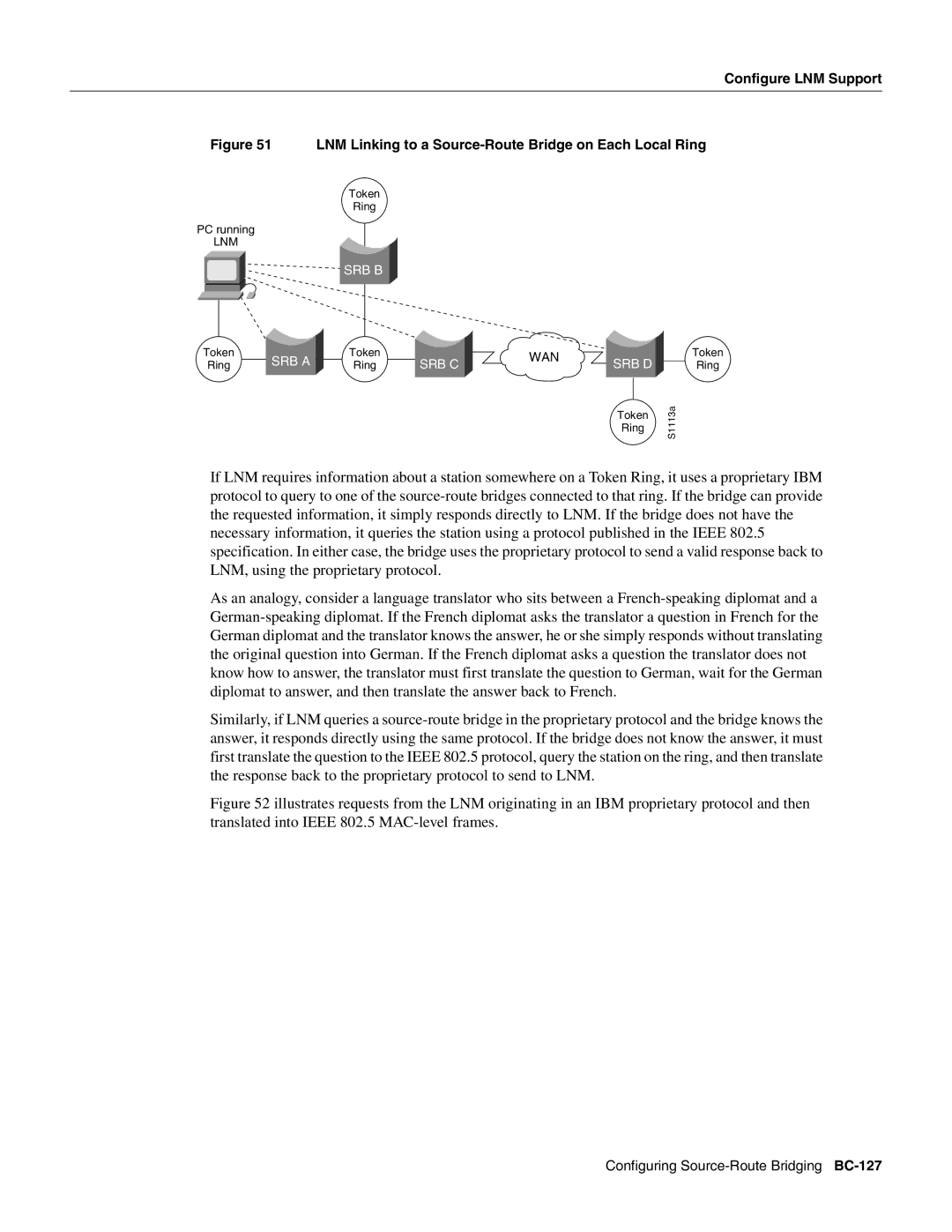
Configure LNM Support
Figure 51 LNM Linking to a Source-Route Bridge on Each Local Ring
Token
Ring
PC running
LNM
SRB B
Token | SRB A | Token | SRB C | WAN | SRB D | |
Ring | Ring | |||||
|
Token
Ring
Token
Ring
S1113a
If LNM requires information about a station somewhere on a Token Ring, it uses a proprietary IBM protocol to query to one of the
As an analogy, consider a language translator who sits between a
Similarly, if LNM queries a
Figure 52 illustrates requests from the LNM originating in an IBM proprietary protocol and then translated into IEEE 802.5 MAC-level frames.
Configuring
